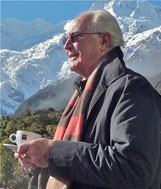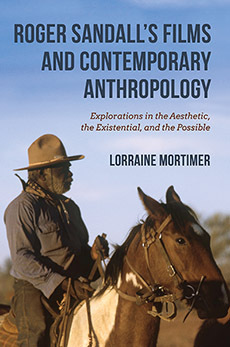(From The Imperial Animal, 1971, by Lionel Tiger and Robin Fox, Chapter 8, The Noble Savage.)
Peace and progress
It is a relatively modern conceit to assert that man is peaceful until he proves otherwise. In our enthusiasm for progress and our success in achieving forms of wealth and welfare, we have become committed to perfectibility and aspire to its wellsprings as ardently as at least one of our ancestors sailed after the fountain of youth.
And yet we do fight; we always have fought, though most of the time we do not fight but tend our fields and flocks. Kings have always had barons to marshal foot soldiers; parliaments have always sought the power to raise armies; Russian communists came to power through violence; to protect their people and interests a state that was supposed to wither away supported a vast militia that was in theory unnecessary.
In constitutional terms, Americans were to be free to pursue liberty and happiness — even equality — and to carry guns and raise armies in small states. This grievously benign self-image has led to Guatemalas, Vietnams, and a stack of pious treaties. Switzerland is a neutral country whose male citizens train in the military three weeks each year. Neutral Sweden, the tough mecca of skilled optimists, has airplane factories carved into mountains, and troops who (with well-schooled Irish forces too) spent months in effortful schemes to bring peace to the Congo.
Violence
The claim that we would live at peace if only there were no causes for war is a legitimate claim, but as pungent and provident a comment about reality as the affirmation that without disease there need be no hospitals. There is disease, there are hospitals; there is violence, and there are wars. We have saved millions because we accept that disease is real. We kill millions because we decide that we are good and the enemy is evil. In our rage at warriors we too easily fail to recall that they are human too.
Humanity has not changed; it goes on doing with more ruthless efficiency what it has been doing for the whole of its existence. But perhaps because of this, and because we now face the prospect of complete destruction for the species, we desperately maintain that this cannot be inevitable, that men are not in some deep way irrevocably committed to violence.
If we accept that they are, and given the instruments of violence at their command, there is no hope for us. Indeed, it does seem to many that there is no longer hope of restraining or containing violence. The Pax Britannica and the Pax Romanum are things of the past. We cannot depend on superpowers using their instruments of violence to keep the peace of the world — if this is ever what they really did. Nor can we depend on ‘rules of war’, for in atomic wars there are no rules, only equivocal results.
The intellectuals and aggression
Many intellectuals rush to quell our fears by telling us that theoretically none of this has to happen, that violence is not part of human nature, that it occurs only because of evil intentions and circumstances that we can eradicate it if we try. They are the Christian Scientists of sociology; and they have not as yet solved the paradox: if we are not by nature violent creatures, why do we seem inevitably to create situations that lead to violence?
If it is in our natures constantly to provoke violence in what is an essentially non-violent organism, then we cannot win, however we play the game. The preliminary answer is clear: we are creatures who are in fact and by nature easily aroused to violence, we easily learn it, and we are wired to create situations in which the arousal and learning readily take place and in which violence becomes a necessity.
Gallons of printer’s ink have been spent discussing “the problem of aggression.” But there is no problem. Aggression in the human species is the same as aggression in any other animal species. It springs from the same causes and serves the same functions. It is a necessary force in the evolutionary processes taking place in any sexually reproducing species.
There has to be competition in order for natural selection to occur. One animal has to strive to outdo another for nest sites, territory, food, mates, dominance, so that selection can take place. Selection can of course favour timidity where a species is oriented toward camouflage or hiding and fleeing behaviour; only by inspecting the behaviour of particular species can we discover which way the pendulum has swing. In the successful and gregarious higher mammals (among others) it has swung decidedly in favour of aggression, and there is no warrant, and above all no evidence, to suggest that the human species is an exception.
A delicate balance of forces
That a species is characterized by aggression does not mean that its members do not cooperate and are never helpful or loyal or loving — quite the contrary. Aggression is an essential component of these virtues, and ethologists have argued very cogently that we should view it as a constructive motive, a positive force acting for the benefit of the species. Only when this positive force spills over into violence does it threaten internal order and survival. Even then, violence against predators can be seen as another constructive device.
There is a delicate balance to be achieved here; ethological studies have brought out brilliantly how various animal populations manage it. There must be sufficient aggression between members of the same species in the same population to ensure that selection takes place and various functions are served; this must be contained — usually by the process of “ritualization” — so that it does not develop into internal violence and destroy the population; violent opposition to threats from without the population must nevertheless be fostered.
Nonviolent aggression within, and violent opposition on the outside, have constantly to be balanced in any human society: members must be capable of violence in order to preserve its integrity, but toward one another they should be non-violently competitive.
A naturally aggressive species
We are not concerned with the causes of armed conflict. It has as many causes and justifications as it has instances. To those who fight them, all wars are just wars. We are concerned with the weight of evidence that indicates that groups of men banded together in some interest will readily resort to violence against other groups of men who are seen as opposed to that interest. The interest itself does not seem to matter: violence can serve any master.
From the historical perspective adopted here, it seems to us that we are a naturally aggressive species easily aroused to violence; that we have invented the means to practice violence effectively on a large scale; that our cultural systems constantly provoke us to violence; that these systems always contain groups of males whose proclivity is violent; that within the last few thousand years of human history, violence has been taken out of its small-scale evolutionary context; and that there are few evolutionary precedents for the control of violence on the scale on which it now occurs.
The atavistic stimuli to violence still exist, but the means of ritualising violence that evolved in the small-scale skirmishing days of our ancestors simply cannot operate effectively in the huge, complex, and heavily armed international world of today.

 An Australian writer living in Sydney, Roger Sandall is the author of The Culture Cult (2001), a study of romantic primitivism and its effects. His work has appeared in a number of places including Commentary, The American Interest, Encounter, The New Criterion, The American, Sight and Sound, Quadrant, Art International, The New Lugano Review, The Salisbury Review, Merkur, Mankind, Visual Anthropology, and Social Science and Modern Society.
An Australian writer living in Sydney, Roger Sandall is the author of The Culture Cult (2001), a study of romantic primitivism and its effects. His work has appeared in a number of places including Commentary, The American Interest, Encounter, The New Criterion, The American, Sight and Sound, Quadrant, Art International, The New Lugano Review, The Salisbury Review, Merkur, Mankind, Visual Anthropology, and Social Science and Modern Society.